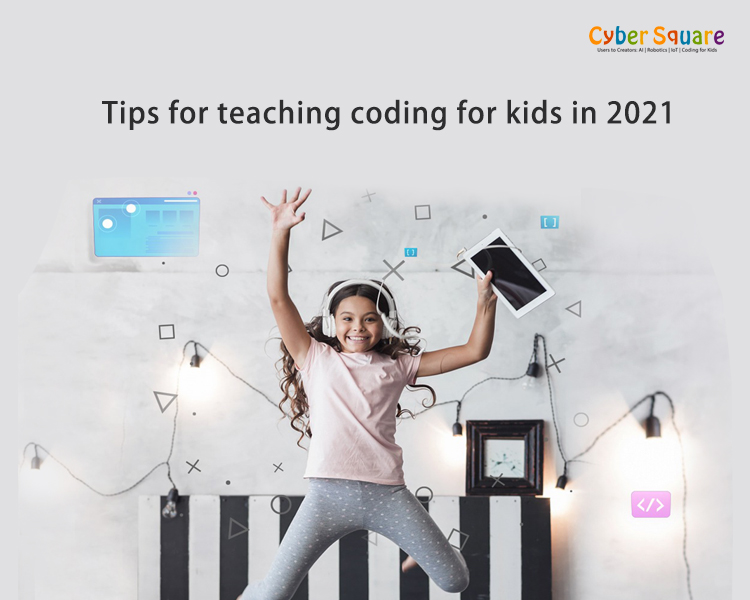Coding is a creative activity that every child can engage in. Kids love to create and experience new things, so programming will come naturally to them, like how painting or drawing would. Coding is considered one of the most important skills of the 21st century. So naturally, schools have adopted the same to their curriculum and are teaching kids coding from lower grades itself. It will help them to become accustomed to the emerging technology. Coding helps kids to improve their creative skills, logical thinking, mathematical skills, and confidence. Learning coding, robotics, IoT will help the children to create a stable ground to find better career opportunities in the future.
According to Steve Jobs,
“Everyone should know how to program a computer because it teaches you how to think.”
In this day and age, we can see programming being used in almost all fields of technology. The market is at its peak and it is still somehow finding room to grow. There is no doubt that the need for programmers will ever fall short because the future demands creators; not people who can do the job of machines.
Coding is this century’s language of creativity, and our children deserve a chance to become makers, rather than takers. No wonder that as a part of the new education policy, children are to be taught coding from grade 6 onwards. Now you might be thinking about how you can teach children coding at younger ages, right? Well, it is easier than you think.
Children have the ability to learn coding even from the age of five! The only concern is that they have to find just the right platform to learn it from.
Children should be self-motivated. Just like any other hobby or skill, we shouldn’t be forcing the children to learn to code, we should instead be guiding them to it. We should develop a passion in them to learn it.
Gamified Approach to Learning
You can notice at times that children would often not be interested in learning something if there is no instant gratification. A child can spend hours a day playing a video game and learning the nook and corner of the technicalities presented in the game. But instead, if he is asked to do the same with his maths textbook, the results might not be the same.
The reason being, the child knows that if he learns the nuances of the video game that he is playing, he’ll be able to use the skill that he learned to pass the level or mission, which in turn gives him instant gratification. This is not the case when it comes to his regular academics. This is where the concept of a gamified approach comes into play.
Gamified approach to coding essentially means creating mini-games, such as block puzzles and problem-solving tasks that act as a simulator for children to learn code.
A gamified approach will be suitable for creating interest in kids for learning programming. When children indulge themselves in fun projects like creating a website, games & applications, they will be motivated to learn how to create these by themselves. Today, many online coding platforms like Cyber Square are adopting this approach.
Choosing The Right Programming Tool
Scratch is a block-based visual programming language and website targeted primarily at children from the age of eight to sixteen as an educational tool for coding. The service is developed by the MIT Media Lab and is used in most parts of the world. Scratch brings out a child-friendly approach to coding. It functions in a way that the process is not too demanding in the knowledge of the user. What makes scratch perfect for kids is that all they need to do is drag and drop blocks coded blocks in the order the child desires. The order that the child drops off blocks will be the order in which the code be executed.
Python is one of the most sought-after programming languages used by programmers worldwide. There is a high chance that most of the software that you use on a daily basis is written in python. When compared to Scratch, it is a tad bit more advanced but is still easier to learn. Python is considered a beginner’s programming language because the coding of the language is similar to English, and because of the familiarity; most people find it easier to learn Python over other programming languages. Python was ranked first in top programming languages by the IEEE Spectrum in 2018.
JavaScript is a programming language commonly used in web development. It was originally developed by Netscape as a means to add dynamic and interactive elements to websites. Most or any interactive website or game you’ve come across utilizes JavaScript. Although harder to learn, it can be used to do any task ranging from making a web application to hosting web servers.
So, Where Do We Start?
Parents don’t even require the need for a programming background to teach their children coding. There are various online coding platforms for kids to teach programming. All we have to do is to select the best one by checking the following factors -
- Well first, check whether they provide the desired coding course
- Check whether they have experienced trainers
- Check whether they provide live sessions for your kids.
- Compare the course fee
- Check whether they provide a valid certificate
- Check how their coding courses help kids
- Check whether they have a gamified approach
- Check whether they have a project-based approach
Now, what are you waiting for? Start teaching your kids to code and make them future-ready.


